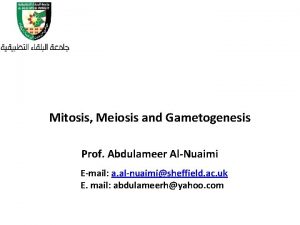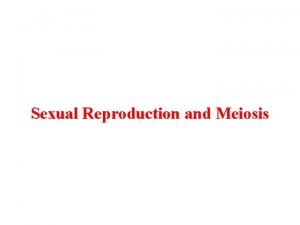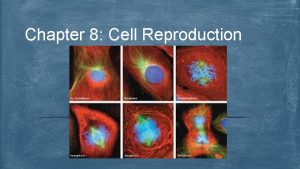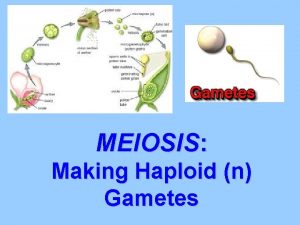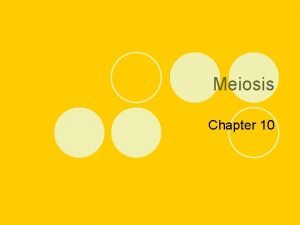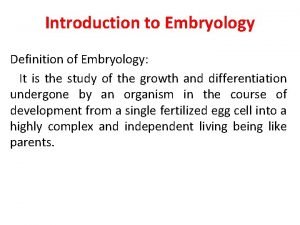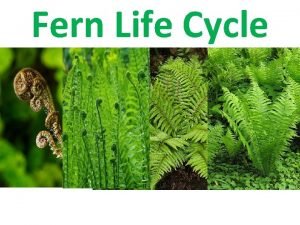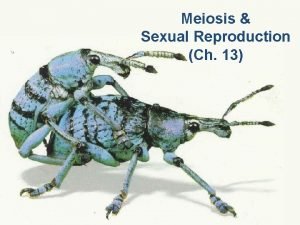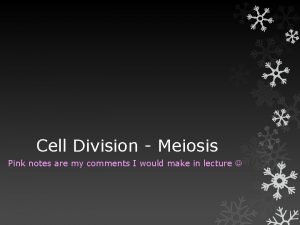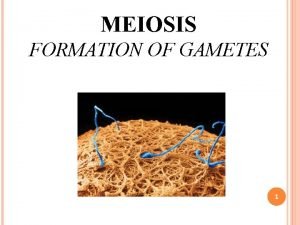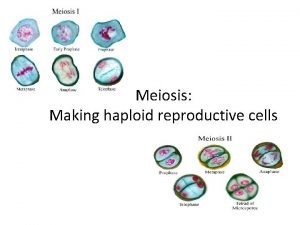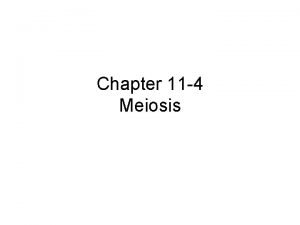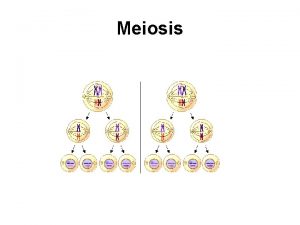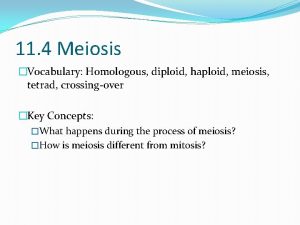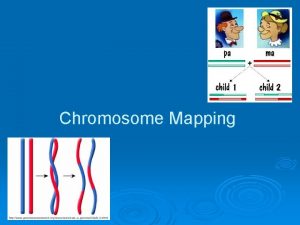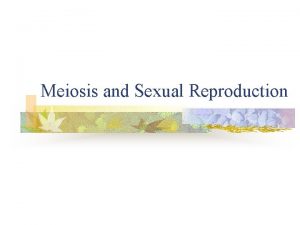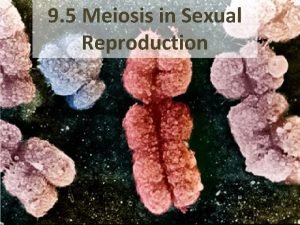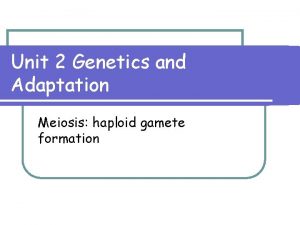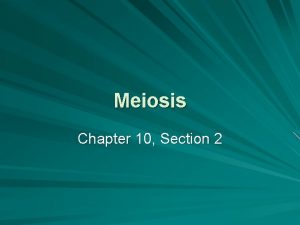Meiosis I Meiosis I results in 2 haploid














- Slides: 14

Meiosis I • Meiosis I results in 2 haploid daughter cells

Meiosis II Meiosis • Each of the haploid daughter cells from meiosis I divide again to make 4 haploid cells.

Comparing Mitosis and Meiosis • The processes of mitosis and meiosis are very similar, but with some important differences: Mitosis l l l Includes only 1 cycle of cell division Occurs in body cells (somatic cells) No crossing over of chromosomes Results in two genetically identical diploid cells Metaphase: 1 duplicated chromosome per spindle fiber Meiosis l l l Includes 2 cycles of cell division (meiosis I and meiosis II) Occurs only in sex cells (gametes) Chromosomes cross over in Prophase I Results in four genetically different haploid cells Metaphase I: 2 duplicated chromosomes per spindle fiber


Interphase • DNA replication occurs • DNA is in chromatin form (unwound, like spaghetti)

Prophase I • DNA condenses to form chromosomes • Homologous chromosomes pair up to form tetrads • Crossing over takes place

Metaphase I • Homologous pairs line up along center of cell • 1 homologous chromosome and its duplicate are attached to each spindle fiber

Anaphase I • Homologous pairs separate, move to opposite ends of the cell

Telophase I • Nuclear membrane reappears • Spindle fibers disappear

Cytokinesis • Cytoplasm of the two cells separate • Meiosis I results in 2 haploid cells that are genetically different

Prophase II • The 2 haploid cells from Meiosis I will divide again

Metaphase II • Chromosomes (set of sister chromatids) line up along the center of the cell • 1 sister chromatid attaches to each spindle fiber

Anaphase II • Centromeres split, sister chromatids are pulled apart

Telophase II and Cytokinesis • Cytoplasm divides, resulting in 4 genetically different haploid cells
 Why is meiosis important?
Why is meiosis important? Two haploid cells
Two haploid cells Prophase 2
Prophase 2 Produces diploid cells
Produces diploid cells Diploid vs haploid number
Diploid vs haploid number Gametes
Gametes Primary oocyte haploid or diploid
Primary oocyte haploid or diploid Dna structure and replication pogil
Dna structure and replication pogil Nucleus of primary oocyte
Nucleus of primary oocyte Do ferns show alternation of generations
Do ferns show alternation of generations Primary spermatocyte
Primary spermatocyte Somatic vs gamete
Somatic vs gamete Haploid
Haploid Haploid
Haploid Crossing-over occurs during
Crossing-over occurs during


